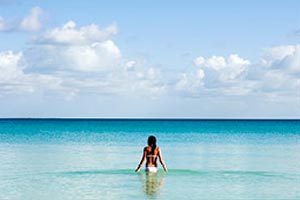Winter is always coming—at least, that’s the mindset I grew up with. And having skied forty-six mountains and averaged 40 ski days a year since age five, that means there is hardly a time of year when I’m not planning (or at least conceiving of) my next ski trip. A good thing, since the sport has only gained traction in the past few years, with record-breaking crowds driving many mountains to cap daily ticket sales. One thing that will never change though is the unpredictability of the snow forecast, which makes controlling what you can that much more important.
Whether you’re thinking about your first ski trip, an annual holiday getaway or one of many slope-side escapes for the coming season, planning ahead is the best way to ensure that everything from the tickets and guides to the hotels goes your way. With so many moving pieces to consider, I’ve laid out the planning process from start to finish, including when and where to go, what passes to buy and tips for finding the best snow conditions, when to hire a guide and navigating holiday crowds.
Contact Indagare or your Trip Designer to start planning your winter ski trip now. Our team can help match you with the accommodations, reservations and guides that are right for you.
Choosing When to Go
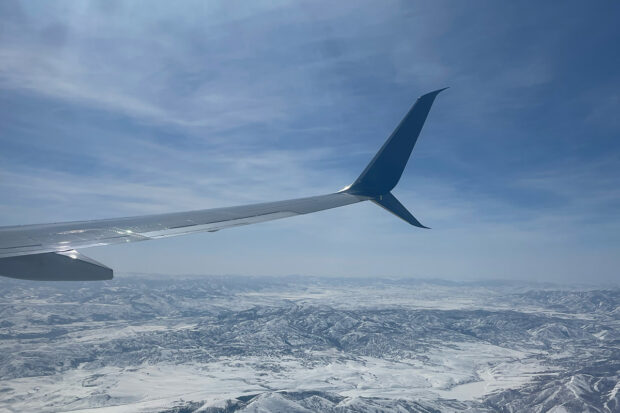
For families, most ski trips are dictated by school breaks, and for most professionals, the holidays are an easy time to get away. For the die-hard skier, of course, the best time to go is spontaneously, when the snow falls.
School breaks change from state to state, and some holidays are less crowded than others. Plus snow patterns are difficult to predict. So, here’s what to know when choosing the perfect time for a North American ski trip.
General Considerations for Best Snow Conditions
- Mountains at higher elevation typically receive more snowfall and maintain their snowpack better throughout the season. This means mountains in the west typically have better snow conditions than those on the east coast.
- On any mountain, north-facing terrain will maintain the best snow quality and snowpack.
- On warmer days and sunny days, south-facing terrain is best avoided in the morning. but skied in the afternoon—this gives the snow time to soften. Note: On extremely cold days, south-facing terrain is best avoided regardless of the sun, while on very warm days, the sweet spot is likely to be closer to midday and last only an hour or so.
- The surest way to finding the best snow is to hire a ski guide—if there is good snow to be found on the mountain, they will know the best way to find it.
Times to Avoid
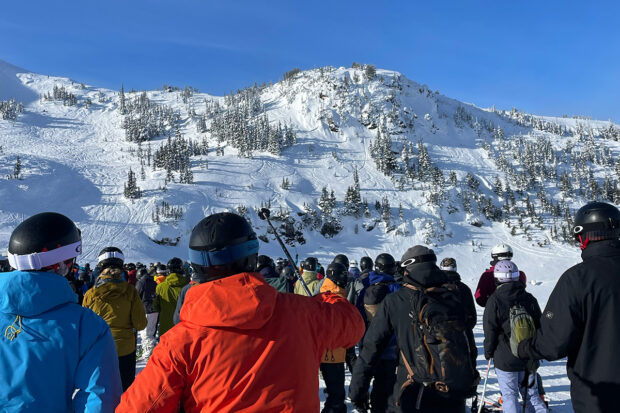
Christmas to New Year’s Week, Martin Luther King Weekend and President’s Day Weekend are, hands down, the most crowded days of the season. This means lift lines, slopes, lodges and restaurants are all likely to be flooded with skiers (and après skiers). That’s not to say it’s not worth it if these are the only times your schedule allows for—but ski trips over these holidays should be planned well in advance, with tickets, restaurant reservations and spa appointments booked months ahead.
Tips to make the most of the holidays:
- Book everything early.
- There really is no “less popular” mountain on holiday weekends, so instead, set your sights on mountains with the most sprawling terrain and/or the best lift infrastructure. (see the mountain guide below).
- Be strategic about which days you ski. For example, the least crowded days during festive season are Christmas Day and New Year’s Day. The long weekends are trickier, as many people will extend for the whole week but, typically, the Monday will be the least crowded of the weekend.
- Get up early and get in line.
- Hire a guide or book a lesson that allows you to skip lines. (Verify ahead of time if guides have this privilege at your chosen mountain.)
Month-by-Month
If your ski trip isn’t governed by breaks and holidays, then it is best to avoid those crowded times altogether and pick your moment based on approximate snow patterns. Here is the month-by-month breakdown of what you can expect (and not expect) from the slopes.
November/December: Most years, in most regions, these are the months where mountains will see the least amount of snow and the least open terrain, because they haven’t had time yet to build a base. Of course, a white Christmas is always possible (and in the 2021/2022 season that was the most snowfall skiers saw in some western states all year), it shouldn’t be counted on and is not worth planning a trip around—especially considering the crowds.
January: Although especially in recent years, the whole season is up in the air in terms of snowfall, January especially is the gamble that can go either way. It can be much like December, with a limited base restricting terrain or it might be the snowiest month of the year. But because January tends towards the beginning of the season, travelers can generally expect that less off-piste terrain will be open and that there may be more hazards (rocks, brush, etc.) hiding beneath thin covers.
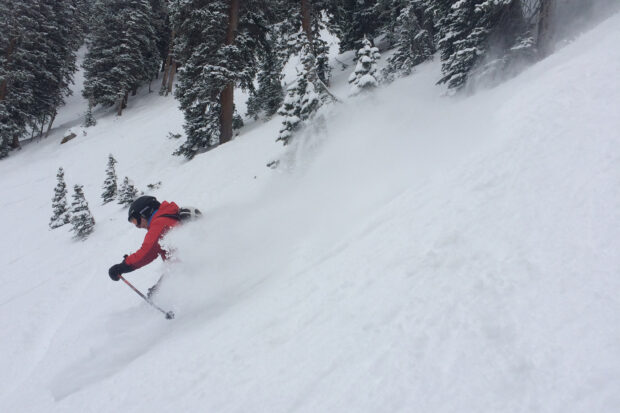
February/Early March: Historically, February and March have been the most reliable snowfall months, but regardless of whether storms hit, they are most likely to have the best snow cover of the season. This doesn’t necessarily mean the snow quality will be the best, but these are the times when you will be least likely to encounter hazards due to limited snow coverage and when the most terrain will be open.
Late March/April: Often waved off for being too late in the season, late March and early April can actually be the hidden gems of the ski season. In recent years, in western states like Utah and Colorado especially, I have found early April to have the most reliably good skiing—it has either been delightful spring skiing (the most likely) or full-blown powder days, sometimes one after the other. This is destination specific, and while most western ski destinations are all but guaranteed to still have open terrain in the first weeks of April, this is not the case for the east coast. As is true at any time year, the best guarantees of snowpack and open terrain will be found at higher elevations, but what is great about late March and April especially is that travelers can begin to gauge how the snow-season is shaping up at the beginning of the year before planning.
Note: Many ski hotels in the west even have an Easter Brunch.
May: This is the month for the spontaneous skier. When seasons like the 2023 season come along, with record breaking snowfall in Utah, Colorado and Nevada, some ski resorts will keep their lifts running through May, and travelers can book that last minute spring skiing trip.

What does spring skiing look like? Patterns reverse in the spring. Instead, the early morning is likely to have the worst snow conditions, as the sun-softened snow froze overnight. Late morning through early afternoon, the snow will be at its best, soft and easy to ski—this is the time of day you might even shed your coat and ski in a t-shirt. Later afternoon, the snow quality decreases as it gets wetter and heavier, which just means it’s time for some après or maybe sunbathing on a hotel balcony or rooftop.
Where to Go & What Pass to Buy

With multi-mountain passes like Ikon and Epic only gaining popularity, the order of these two steps has become interchangeable and, in some cases simultaneous. If you have your heart set on a mountain, you want to buy whatever pass allows you to ski there for however many days. If your ideas are more fluid, you could pick a multi-mountain pass and tailor your ski trip(s) to it.
Key Considerations
- For many mountains on the Ikon or Epic pass, it only takes three to five days skiing to make at least one of the multi-mountain pass options worth it financially. For example, in the 2023/2024 season, five day-passes skiing at peak season at Deer Valley will cost $1,395 ($279 per day). The Ikon Pass, which includes seven days at Deer Valley and grants access to all Ikon mountains, costs only $1,259.
- If you are planning a trip to a mountain on the Epic or Ikon pass, survey the other mountains on that pass and weigh the likelihood that you will visit one or more of them—this may help determine whether a multi-mountain pass is right for you and prevent you from dealing with inflated day ticket sales last minute.
- Multi-day passes and daily lift tickets experience price increases as the season approaches—the Ikon pass sells out often early December. Buying early is the best way to secure a deal.
- Note to Holiday Travelers: Some passes and mountains have blackout dates on certain holidays.
You can find the complete lists of the mountains served by each pass (and each version of each pass) on their websites, in addition to how many days the pass allows at each. Below, I have compiled a brief cheat sheet.
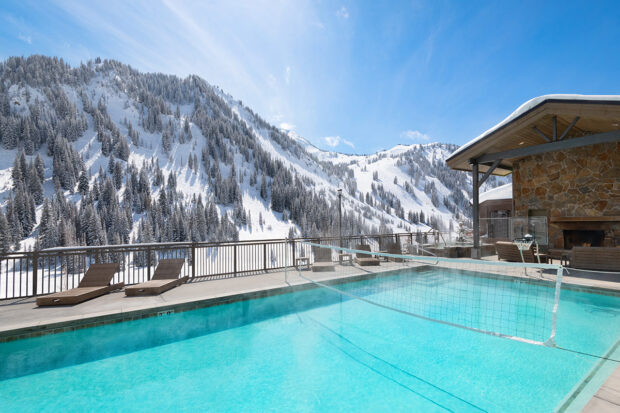
Ikon Pass ($1,259)
Notable mountains not included: None! All Ikon mountains are included.
Notable mountains with unlimited days: Stratton, Steamboat, Palisades Tahoe, Mammoth, Sugarbush, Tremblant
Maximum number of days for all other notable resorts: 7 days (select resorts have fewer)
Blackout dates: None
Ikon Base Pass ($929)
Notable mountains not included: Jackson Hole, Aspen Snowmass, Deer Valley, Alta, Sun Valley, Snowbasin, Taos
Notable mountains with unlimited days: Stratton, Palisades Tahoe, Mammoth, Sugarbush, Tremblant (includes blackout dates at all but Tremblant)
Maximum number of days for all other notable resorts: 5 days (select resorts have fewer).
Blackout dates: Major holidays and the surrounding days.
Ikon also has a four-, three- and two-day passes.

Epic Pass ($929)
Notable mountains with unlimited access: All U.S. Vail-owned Resorts (except Telluride), plus Whistler Blackcomb, British Columbia
Black out dates: None.
Epic Local ($689)
Notable mountains with unlimited access: Breckenridge, Crested Butte, Mt. Snow, Whistler
Notable mountains with unlimited access except holidays: Park City, Northstar, Stowe
Notable mountains restricted to 10 days across all three resorts: Vail, Beaver Creek and Whistler Blackcomb
Epic also offers one- to seven- day passes.
Ski Mountain Matchmaker
For those seeking something specific out of a mountain for their ski trip, view the brief matchmaker below.
Most Terrain and Most Lifts: Big Sky, Whistler, Park City, Vail and Palisades Tahoe
Most Luxurious Lifts: Big Sky, Whistler, Sunday River
Most Luxurious Hotels: Deer Valley, Aspen, Vail
Least Crowded Season-Long: Sun Valley, Sugarloaf, Big Sky, Aspen, Telluride
Most Snowfall Season-long: Alta, Snowbird, Mammoth
For Groomers: Deer Valley, Beaver Creek, Northstar, Sun Valley, Bretton Woods, Aspen Snowmass, Stratton
For Challenging Terrain: Snowbird, Alta, Whistler, Crested Butte, Palisades Tahoe, Jackson Hole, Telluride
For a Village: Vail, Whistler, Telluride, Park City, Mont Tremblant, Aspen Mountain at Aspen Snowmass
Closest to the Airport: Deer Valley, Park City, Snowbird, Alta, Jackson Hole, Steamboat (Note: some airports have direct flights to Aspen)
Choosing a Hotel
Especially when traveling at peak season, it is important to either plan far in advance to ensure the hotel and room category that you want or not get too attached to one specific hotel in a destination.
Questions to Consider
- Do you want ski in/ski out? Some mountains will have more options than others in this department. For example, all top hotels at Deer Valley are ski in/ski out while some Aspen Snowmass hotels require a shuttle.
- Does the hotel need to be family friendly? While in most destinations it is easy to single out the resort property as the best fit for kids, skiing is a bit different. It is often a family activity, and while some hotels certainly do cater more to adults or couples, most hotels are experienced with families and equipped to welcome kids of various ages.
- Do you need a full-service resort? Most western American ski destinations will have their token resort property, be it a Montage or a Four Seasons. In the east, options are more limited.
- What style do you want? Most ski hotels fall into one of three categories: rustic chic, traditional chalet or contemporary alpine. A few will blend the styles or have multiple, but the vibe is decidedly different staying at the Ranch at Rock Creek in Montana as compared to the Four Seasons Whistler Blackcomb, which is markedly different from the Stein Eriksen Lodge in Deer Valley.
- Do you prefer hotel room/suite, condo/residence or a private house? Some hotels will offer some combination of the three, but many will only have the first. In that case, a rental may be worth considering if available.
Lessons & Guides

If your group requires ski lessons or guides, booking early is critical. With such high demand, instructors and guides at many popular ski resorts can be completely booked out for peak dates by the time the season starts, and solves for this are difficult. Many hotels, especially those with a substantial kid’s program, will have close relationships with the mountain’s ski school and can help arrange lessons, guides or daily ski school, which can make integration with the hotel stay seamless. But all ski resorts will also have their own system and contacts for booking that are reliable.
I recommend booking a guide for the first day or two if you are traveling to a mountain resort in the west for the first time, regardless of ski ability. The value-add of a guide for a day or two compared to a trail map is immeasurable. They don’t just know the mountain trails; they know the terrain of every trail and aspect, which areas are most likely to be devoid of people, where the best snow can be found depending on weather conditions and time of day and more. They will tailor all this intel to the group—though with larger groups or groups with varied ability level, it may be best to book two guides. They are often the gift that keeps on giving, as the remainder of the trip can be spent returning to places you enjoyed and sweet spots the crowds will never find.
Note: Booking a guide is not the same as booking a lesson, but most guides can offer some instruction if it is requested.
Rentals

Whether you have no equipment of your own or just prefer not to lug it across the country, every ski resort and ski town will have rental options.
Tips for Renting
- Rent in close proximity to your hotel. This helps not only limit the hassle of acquiring and returning rentals, but is much more convenient should you need a different size or an adjustment. Some larger hotels will have their own rental facility on property or a partnership with one nearby.
- Know your ability. Rental boots and skis are tailored to your ability level, and the best way to ensure a good skiing experience is to get the equipment that fits your skill. Using equipment above your level can be just as uncomfortable (if not more) as using equipment below your level, so it is important to be honest with the staff member helping you.
- Don’t be afraid to come back if something isn’t working for you. Testing the equipment is often the best way to tell if you were matched correctly or not. Experts at the rental shop may be able to adjust or switch your equipment if you determine something is wrong.
- If at all possible, bring your own ski boots! The magic of the right pair of ski boots is not a myth. I have heard countless people say things along the lines of “I thought I hated skiing,” or “I thought skiing was just an uncomfortable sport…and then I got my own boots.” If you don’t own ski boots and expect to make more ski trips in the future (even if only once every year or so), it may be worth the investment.
Expect the Unexpected

Once you have controlled for what you can, all that’s left is to measure expectations. While it never hurts to cross your fingers and hope for good snow, the weather makes no promises. But there is fun to be had regardless of the snow conditions—that’s what good company, expert instructors and guides and relaxing (or buzzy) après experiences are for. Plus, there’s always next year.
Contact Indagare or your Trip Designer to start planning your winter ski trip now. Our team can help match you with the accommodations, reservations and guides that are right for you.







